
By Judy Carmack Bross

Randy Adamsick and Francia Harrington
Some of our city’s most convivial history buffs gathered last Sunday to learn about when Chicago was the busiest seaport in the United States from Loyola University Professor of American and Public History Theodore Karamanski, author of several maritime masterpieces.

Ted Karamanski speaks on Chicago Queen of the Lakes

Members of the Guild of the Chicago History Museum and their guests visited afterwards over brunch at tables centered with spring flowers and nautical items created by the Guild’s Connie Barkley. Guild President Jill Kirk welcomed guests to the private club nestled close to Lake Michigan.

Guild Program Co-Chair Karen Zupko
Sparking Karen Zupko, the Guild’s co-chair for programs, introduced Karamanski, reading student reviews including: “Ted has 36 awesome ratings, including amazing lectures, he cares about both the subject he is teaching and his students learning the materials, and TK is super cool!”
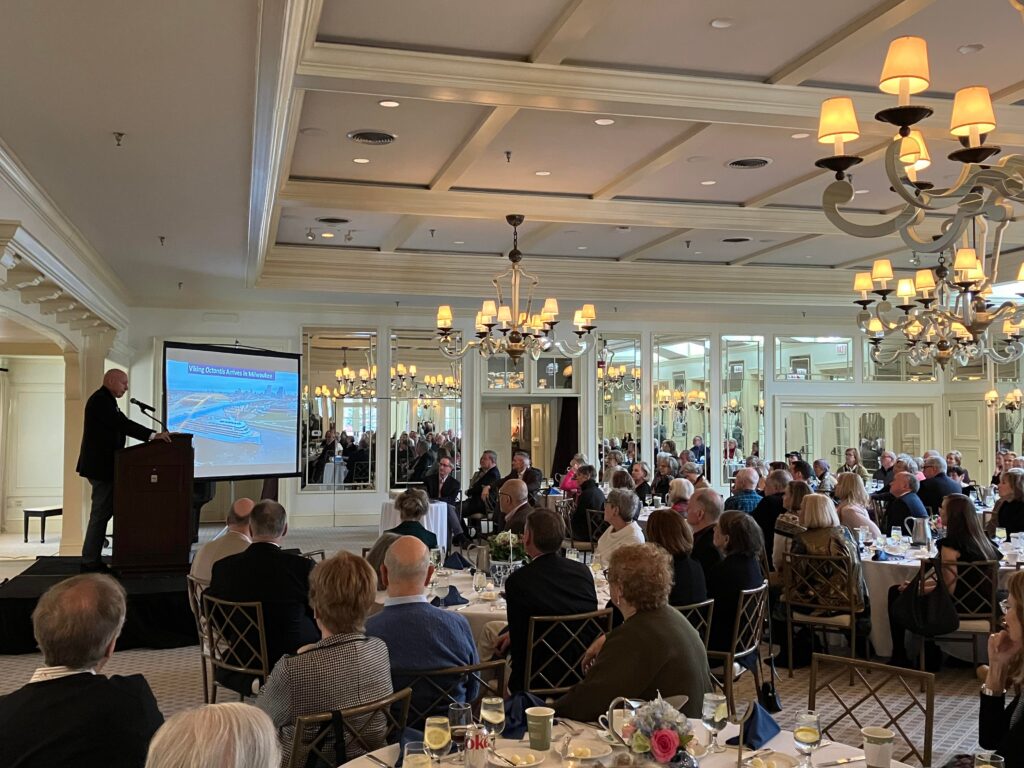

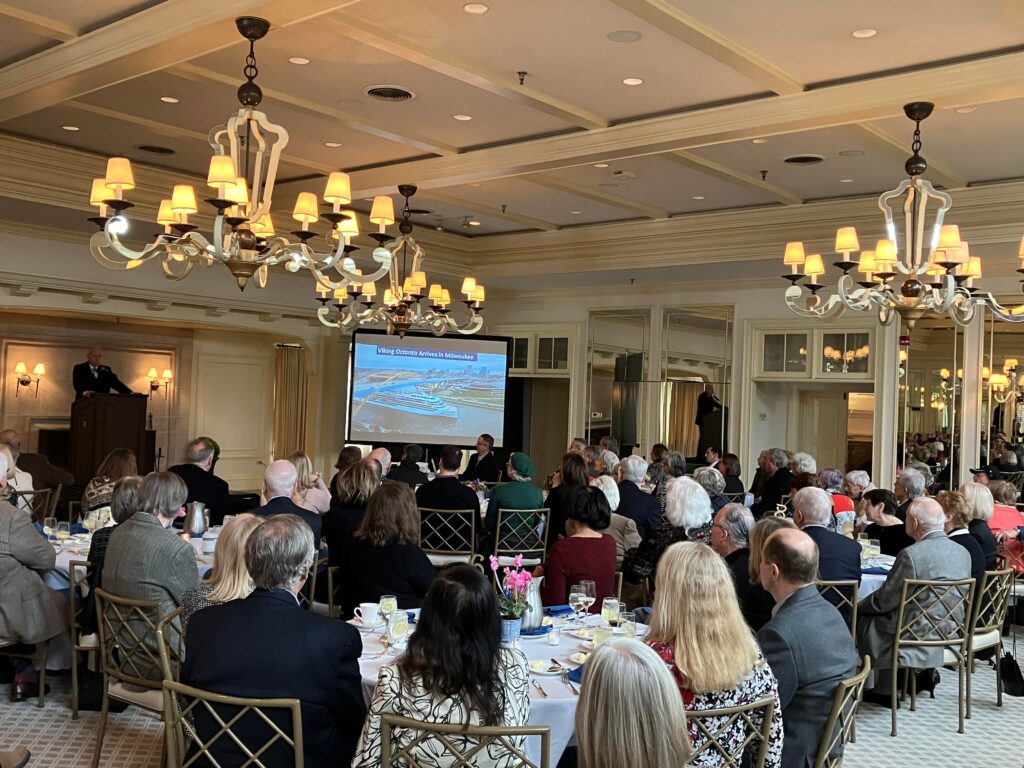
Karamanski told the sold-out audience:
“From our very beginnings in 1937 when the Chicago seal was created which included a baby springing out of a sea shell like the Botticelli’s ‘Birth of Venus’ we see that city founders felt that the Lake was central to economic development,” Karamanski said. “By 1900 Chicago was the fourth busiest port in the world, following London, New York, and Hamburg. Vast amounts of cargo came through here then—more traffic than the Suez Canal.”

Ted Karamanski
Karamanski is Director of Loyola’s Public History Program and has served as a heritage consultant to the National Park Service, National Geographic, The History Channel, BBC, and the Travel Channel. He is the author of ten books, most recently, Mastering the Inland Seas: How Lighthouses, Navigational Aids, and Harbors Transformed the Great Lakes and America.

Karamanski – Mastering The Inland Seas
Karamanski paid tribute to the Chicago History Museum, recalling many days at the museum’s Research Center.

Schooner on the Great Lakes
Karamanski spoke of the days when schooners were “the covered wagons of the Great Lakes, bringing pioneers to Chicago,” noting that ports on the Great Lakes were cities made by schooners. He noted that Chicago’s had the key position, sitting right on the continental divide with the Great Lakes and the St. Lawrence River and the Mississippi water system.
“The opening of the I & M canal was the takeoff moment for the city of Chicago, and the railroads complimented the maritime system,” he said. “During the 19th century, wheat and corn were sent to Buffalo, connecting with the Erie Canal, and returned with coal and manufactured goods. Grain elevators were our first skyscrapers. Timber harvested in Wisconsin and Michigan were transferred on waters flowing into Lake Michigan, with what is now Pilsen becoming a vast lumber district.”
Karamanski detailed why Chicago no longer rates as the busiest port in the United States in 1871 in terms of tonnage dropped off. He pointed out that after 1890 the Chicago River became congested and Chicago leaders focused on the Lake as a recreational amenity. The St. Lawrence Seaway opened in 1959 to great hopes but the locks proved too narrow for oceanic vessels competitive goods like VW Beetles arrived.
“Chicago is now 38th busiest port and it has the same amount of tonnage coming in an out as it did in 1900: 15,428,892 tons. Today, the port of Milwaukee outpaces Chicago, with eight different cruise lines coming into that port, while Chicago has just one. It seems that we are missing another economic opportunity for the Great Lakes. Also, one ship can carry what requires 700 railroad cars or 2800 trucks. But the Great Lakes will play such an important role in the dry years ahead and it is incumbent on us to make this happen.”

Mike Cahon and Brian White
Sailing enthusiasts Ellen and Trigg Waller, Janet and Rodger Owen, Jim Kinney, Brian White, Karen Zupko, Mike Cahon, David Kenzier, Connie Barkley, and Carole Barthel whose husband Chuck Norton is a Mackinac Race winner, enthused over brunch summer voyages anticipate.
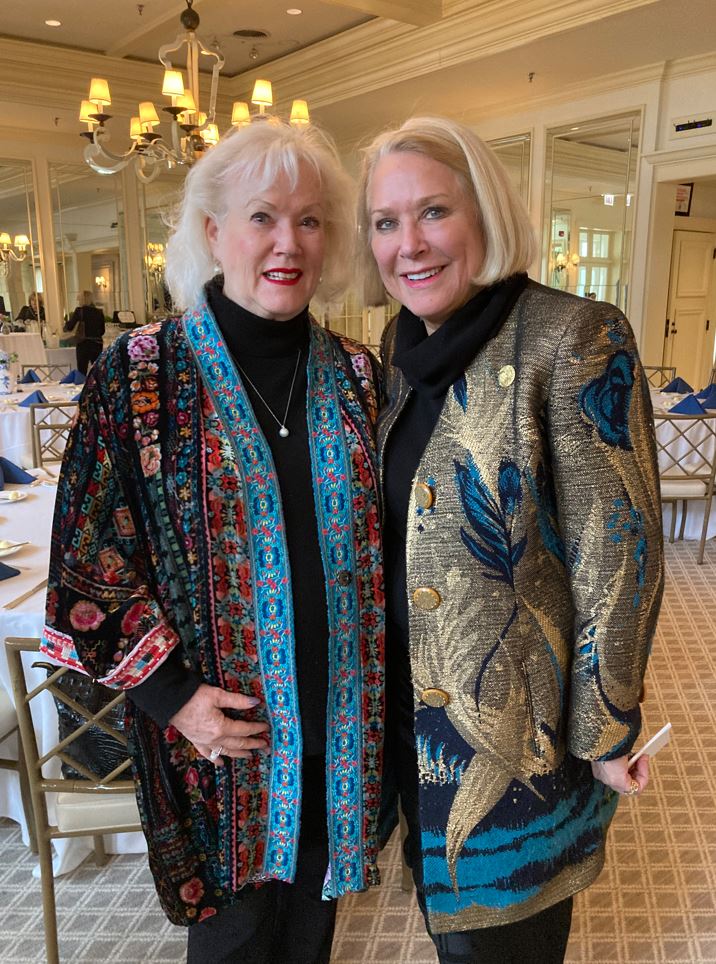
Sharon Hare and Karen Zupko
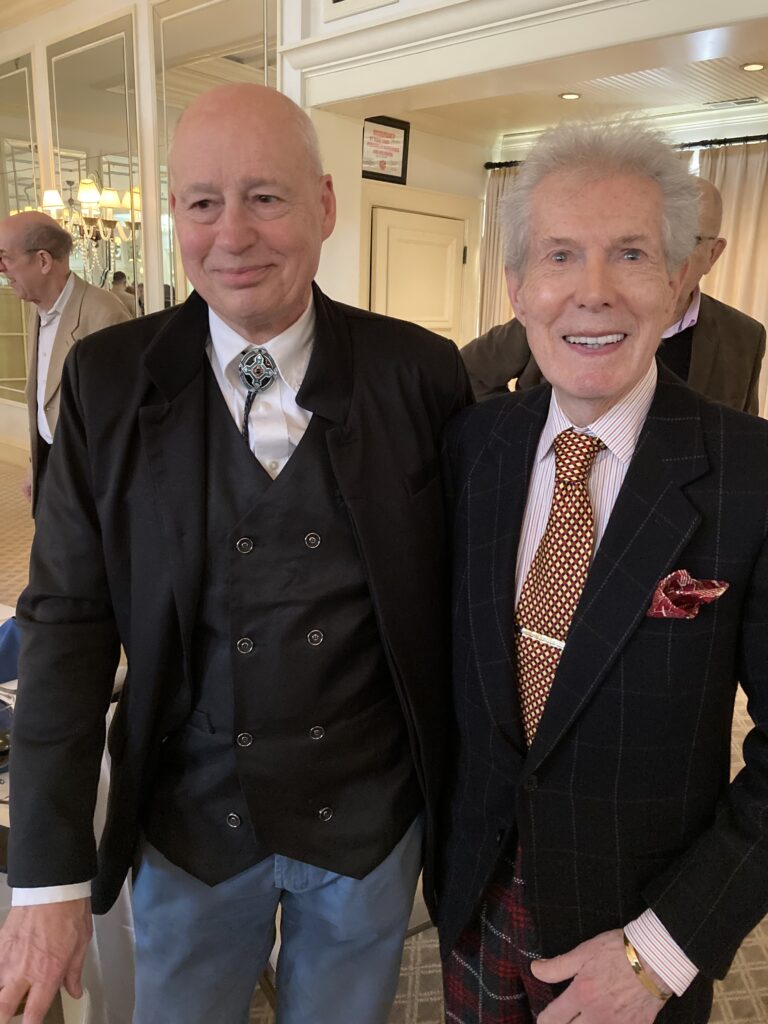
Ted Karamanski and Conrad Miczko

Pamela Bardo and Jim Grimes
Often called “the Museum’s best friend,” the Guild is dedicated to supporting the Chicago History Museum and offers opportunities for learning, socializing, and volunteering. Members serve as informal ambassadors to promote museum activities and raise funds.
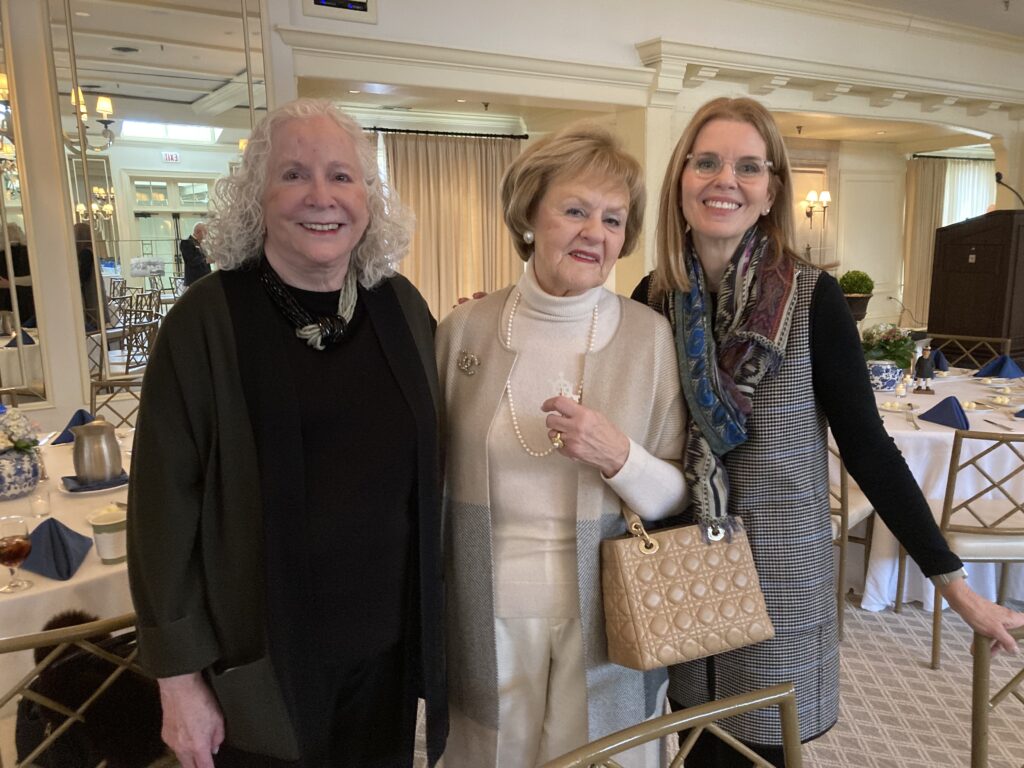
Guild members Bonnie Lipe, Connie Barkley, and Erica Meyer

Lyssa Piette, left, with Louis Lehr and Sherry Lehr


Guild Nominating Chair Linda Celesia
Photos by Eric Miller, Chicago History Museum
For more information about the Chicago History Museum and the Guild, visit Home.ChicagoHistory.org







